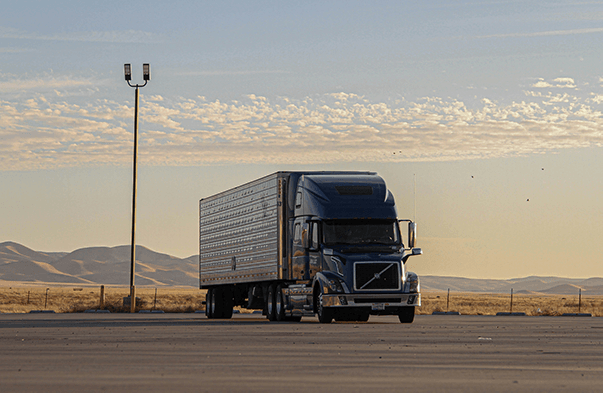 There are intricate rules and regulations surrounding commercial trucking in this country, and understanding them is imperative for drivers, the companies that employ them, and attorneys who work cases involving commercial vehicles. Many cases involve the concept of Personal Conveyance (PC), a term defined and regulated by the Federal Motor Carrier Safety Administration (FMCSA). Depending on the situation, the extent to which a driver adheres to the rules of Personal Conveyance may have a significant impact on a trucking case.
There are intricate rules and regulations surrounding commercial trucking in this country, and understanding them is imperative for drivers, the companies that employ them, and attorneys who work cases involving commercial vehicles. Many cases involve the concept of Personal Conveyance (PC), a term defined and regulated by the Federal Motor Carrier Safety Administration (FMCSA). Depending on the situation, the extent to which a driver adheres to the rules of Personal Conveyance may have a significant impact on a trucking case.
What Is Personal Conveyance?
Personal Conveyance is defined by the FMCSA as “the movement of a commercial motor vehicle (CMV) for personal use while off-duty. A driver may record time operating a CMV for PC as off-duty only when the driver is relieved from work and all responsibility for performing work by the motor carrier.”
Examples of Proper Use of Personal Conveyance
The FMCSA provides several examples of approved uses for Personal Conveyance. These uses include:
- Time spent traveling from a driver’s en route lodging (such as a motel or truck stop) to restaurants and entertainment facilities.
- Commuting between the driver’s terminal and his or her residence, between trailer-drop lots and the driver’s residence, and between work sites and his or her residence. In these scenarios, the commuting distance combined with the release from work and start to work times must allow the driver enough time to obtain the required restorative rest as to ensure the driver is not fatigued.
- Time spent traveling to a nearby, reasonable, safe location to obtain required rest after loading or unloading. The time driving under personal conveyance must allow the driver adequate time to obtain the required rest in accordance with minimum off-duty periods under 49 CFR 395.3(a)(1) (property-carrying vehicles) or 395.5(a) (passenger-carrying vehicles) before returning to on-duty driving, and the resting location must be the first such location reasonably available.
- Moving a CMV at the request of a safety official during the driver’s off-duty time.
- Time spent traveling in a motorcoach without passengers to en route lodging (such as motel or truck stop), or to restaurants and entertainment facilities and back to the lodging. In this scenario, the driver of the motorcoach can claim personal conveyance provided the driver is off-duty. Other off-duty drivers may be on board the vehicle, and are not considered passengers.
- Time spent transporting personal property while off-duty.
- Authorized use of a CMV to travel home after working at an offsite location.
Examples of Improper Use of Personal Conveyance
Conversely, some examples of improper use of Personal Conveyance given by the FMCSA include:
- The movement of a CMV in order to enhance the operational readiness of a motor carrier. For example, bypassing available resting locations in order to get closer to the next loading or unloading point or other scheduled motor carrier destination.
- After delivering a towed unit, and the towing unit no longer meets the definition of a CMV, the driver returns to the point of origin under the direction of the motor carrier to pick up another towed unit.
- Continuation of a CMV trip in interstate commerce in order to fulfill a business purpose, including bobtailing or operating with an empty trailer in order to retrieve another load or repositioning a CMV (tractor or trailer) at the direction of the motor carrier.
- Time spent driving a passenger-carrying CMV while passenger(s) are on board. Off-duty drivers are not considered passengers when traveling to a common destination of their own choice within the scope of this guidance.
- Time spent transporting a CMV to a facility to have vehicle maintenance performed.
- After being placed out of service for exceeding the maximum periods permitted under part 395, time spent driving to a location to obtain required rest, unless so directed by an enforcement officer at the scene.
- Time spent traveling to a motor carrier’s terminal after loading or unloading from a shipper or a receiver.
- Time spent operating a motorcoach when luggage is stowed, the passengers have disembarked, and the driver has been directed to deliver the luggage.
Considerations for Your Trucking Case
For legal cases involving commercial trucking, the rules for Personal Conveyance may be relevant. Understanding the correct application of PC and whether a driver's actions fell under this concept during an incident can be essential.
While PC can be very useful when used correctly and allow drivers some needed flexibility in their day, people abuse it. A case John Ross, our Commercial Trucking Expert, had recently involved a driver traveling over 700 miles in one week using Personal Conveyance. In one particularly egregious stretch, he drove nearly 200 miles, one-way, across Arizona, claiming PC the entire way. In this case, he was advancing his load, moving product for the benefit of the motor carrier, and driving for many hours that would not count toward his 11-hour, 14-hour, or 70-hour driving limits.
Drivers are required to be on duty driving when traveling from point A to point B for a motor carrier per FMCSR 395.3 and not go over driving 70 hours in 8 days. The driver maintained less than 70 hours on duty in 8 days by using personal conveyance. This meant that he was able to keep working without taking the required breaks and resets, potentially leading to a fatigued driver who should not be on the road.
In this specific case, the driver had been doing this for months. The result of John Ross' findings settled the case in a matter of weeks, proving the motor carrier allowed this driver to use Personal Conveyance to further the loads for the motor carrier and the motor carrier was “negligent” for allowing this. The motor carrier could have and should have stopped this abuse of PC after reviewing his logs. They appeared to have let it slide, however, meaning the liability for this person being on the road when they should not have been then falls on both the driver and motor carrier.
A Commercial Trucking Expert can be brought on in cases like this to analyze logs, determine whether the company discovered the rule-breaking, and determine whether or not they took action to deliver consequences or allowed it. Suffice to say in this particular case and many like it, the driver and truck should have never been in that particular place at that particular time to cause the accident, and it also calls into question issues of fatigue that could be assessed by a Human Factors Expert such as ESI's Dr. Nancy Grugle.
Personal Conveyance is a helpful aspect of commercial trucking operations that does not negatively impact safety standards when used correctly. Accordingly, it is essential that the driver complies with FMCSA regulations and the motor carrier ensures compliance. If you have a case involving a commercial trucking accident, it is essential to bring on an experienced Commercial Trucking Expert who can analyze driver logs and determine whether or not a driver on PC was working within the bounds of the law.


